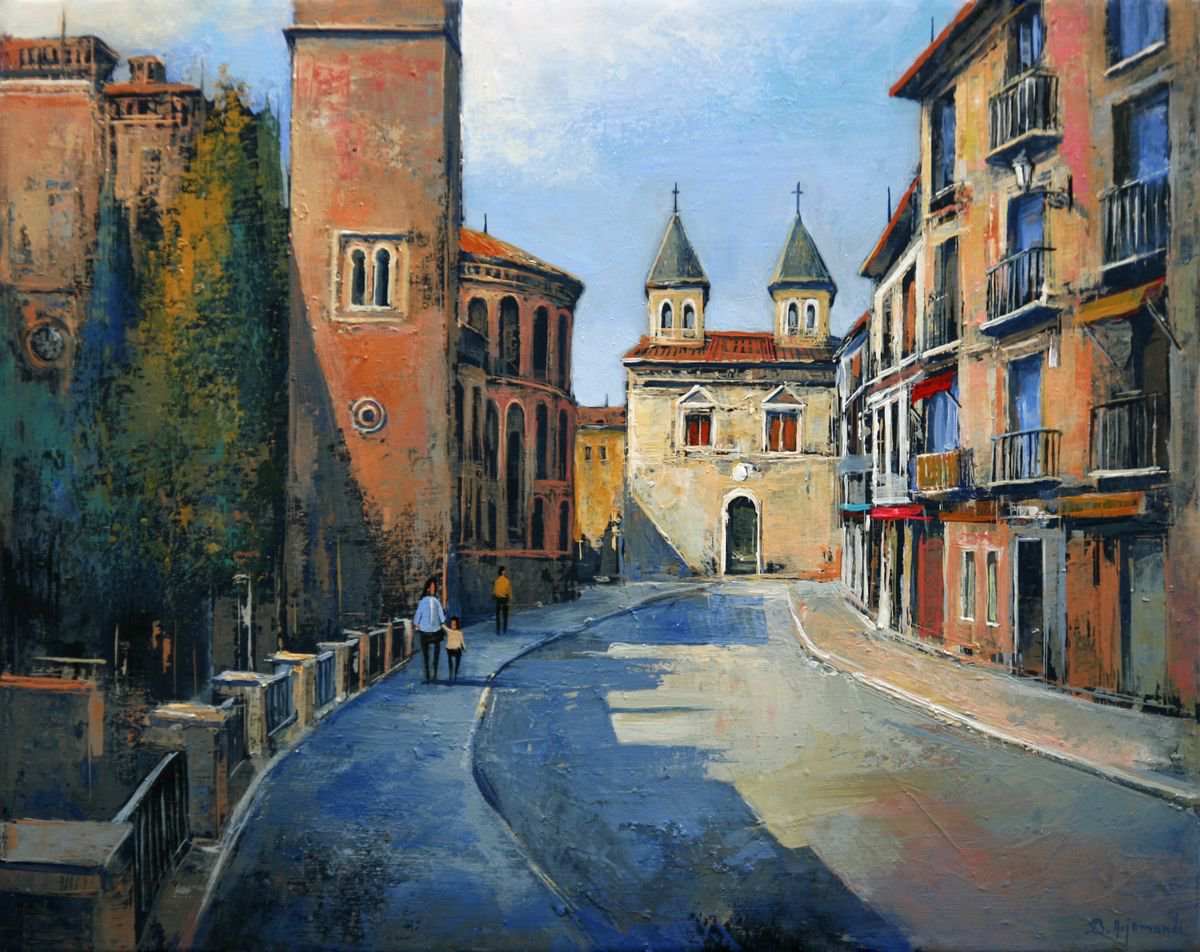
#Toledo wine and canvas full#
"El Retiro" is adorned with ornate fountains, statues of Spanish writers and heroes, gazebos and open-air cafes.ĭifferent areas of the park reveal various landscaping styles, from French-inspired manicured lawns to craggy tree-lined pathways and the romantic La Rosaleda rose garden with more than 4000 roses that are in full bloom in May and June. Parque del Buen Retiro, Madrid’s most famous park, is an expansive 118-hectare (292-acre) area that was once reserved for Spanish royalty and aristocracy until it was opened to the public at the end of the 19th century. Retiro Park has no end of excellent selfie locations © Westend61 / Getty Images 7.

Planning tip: Don’t bother whipping out your camera phone at La Venencia – snapping photos is still strictly prohibited, just as it was in the 1930s when the bar was wary of fascist spies. Hemingway also used to frequent La Venencia, a dimly lit sherry bar that is virtually frozen in time with its massive molasses-stained wooden barrels, antique cash register and fading sepia-hued posters. It’s no secret that the American literary giant, fondly called "Don Ernesto," was Madrid’s adopted sybarite who loved to drink, eat, write and watch bullfights while he was covering the Spanish Civil War as a foreign journalist.įans of Hemingway can retrace his footsteps and enjoy some of his favorite haunts that still exist today, including El Sobrino de Botín, the world’s oldest restaurant, which houses a 16th-century cellar cradling dust-covered wine bottles. "Hemingway did not drink here" is a popular joke written on signs hanging in some Madrid establishments. Ride the Teleféricoįor the best bird's-eye views of the Spanish capital, hop on the Teleférico (cable car) in Parque del Oeste, which connects to Casa de Campo, the city’s green lung.Įl Sobrino de Botín is the oldest restaurant in the world and a favorite spot of Hemingway © Krzysztof Dydynski / Lonely Planet 5. Planning tip: Many of the vendors only accept efectivo (cash), so it's best to take money out before heading to the market, or you’ll be left hunting for an elusive cash machine. Open from 9am to 4pm, El Rastro stretches along the La Latina neighborhood’s Plaza de Cascorro, La Ribera de Curtidores and Ronda de Toledo and features a labyrinth of open-air stalls peddling clothes, souvenirs, handicrafts, antiques and all the bric-a-brac you can imagine. Shop at El Rastro flea marketĮvery Sunday and on public holidays, you can take part in a 400-year-old shopping tradition at El Rastro flea market. Planning tip: Sunday afternoons are the best time to visit Cava Baja, a popular street in the historic La Latina neighborhood with vibrant little bars, taverns and restaurants that are perfect for a laid-back tapas crawl.

You can join locals after work any day of the week, hopping from one tapas bar to the next to sample a selection of Iberian hams, charcuterie and cheeses. A tapa is a small plate of food usually paired with a glass of wine, caña (a small glass of beer) or vermút, Madrid’s popular aperitif. Tapas hopping, or ir de tapas, is a national pastime and a satisfying prelude to dinner, which in Spain is typically eaten between 9pm and midnight. Get a taste of Spain on a traditional tapas crawl Go on a tour of Madrid's many incredible tapas bars © TravelCollection / Alamy Stock Photo 2. Museo Thyssen-Bornemisza, once the private art collection of Baron Heinrich Thyssen-Bornemisza and his son Hans Heinrich Thyssen-Bornemisza, showcases nearly 1000 paintings of the world’s most celebrated European and American artists from the 13th to the 20th century. The Reina Sofía is the Spanish national museum dedicated to 20th-century art, exhibiting impressive collections of Surrealist and Cubist masters Salvador Dalí and Pablo Picasso, including Picasso’s huge anti-war oil painting Guernica.

Arguably the most famous work people flock to see is Velázquez’s Las Meninas, an oil on canvas considered among the most important paintings in Western art. The Prado houses several masterpieces by Spanish artists Diego Velázquez, Francisco Goya and Francisco Zurbarán. Even if you’re not typically the gallery type, a stop at one of these venues is an essential Madrid experience. Madrid’s "Golden Triangle of Art" consists of three renowned museums, the Museo del Prado, Reina Sofía and the Thyssen-Bornemisza, which are home to some of the world’s most valuable art collections. Immerse yourself in the best experiences the world has to offer with our email newsletter delivered weekly into your inbox.


 0 kommentar(er)
0 kommentar(er)
